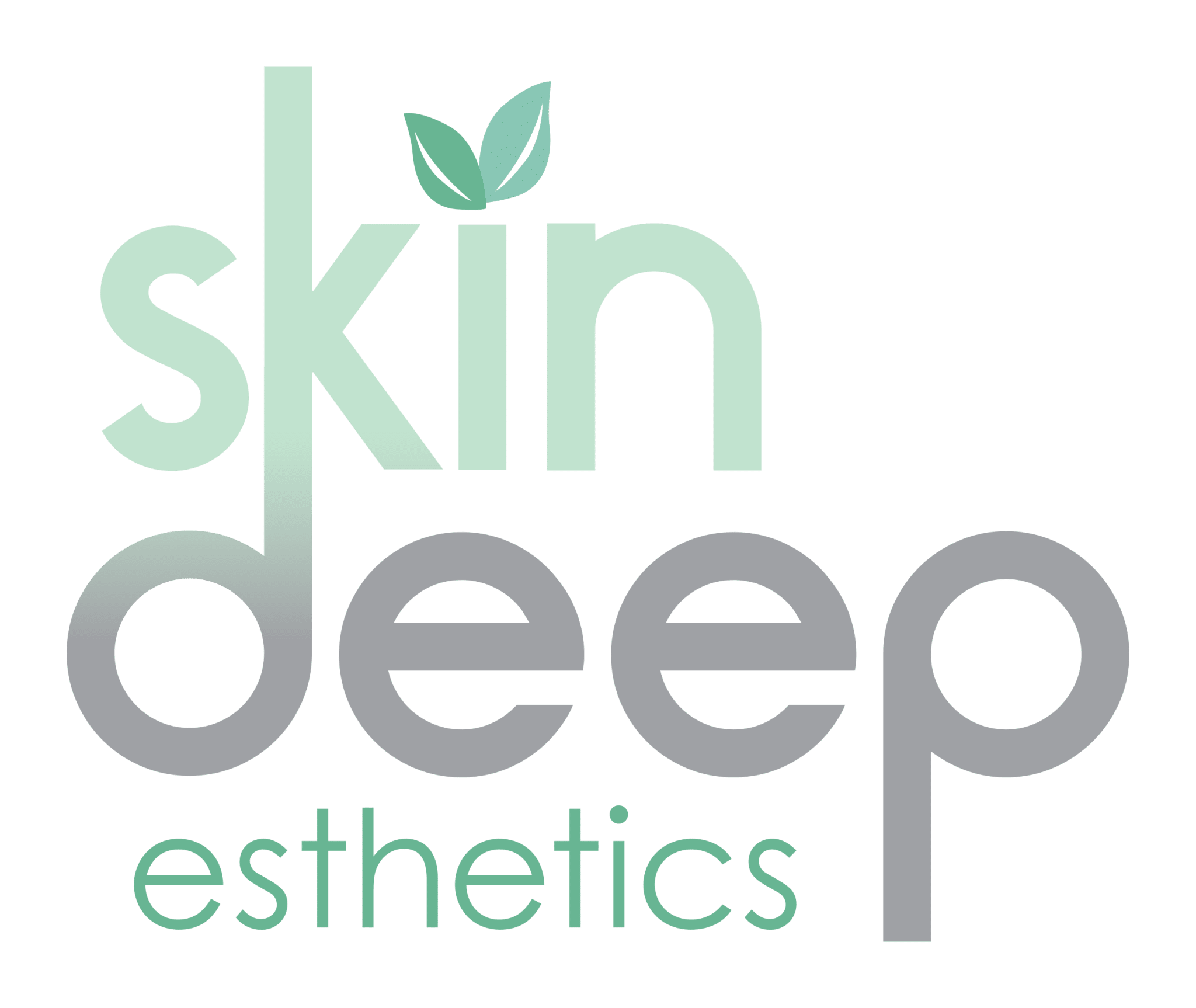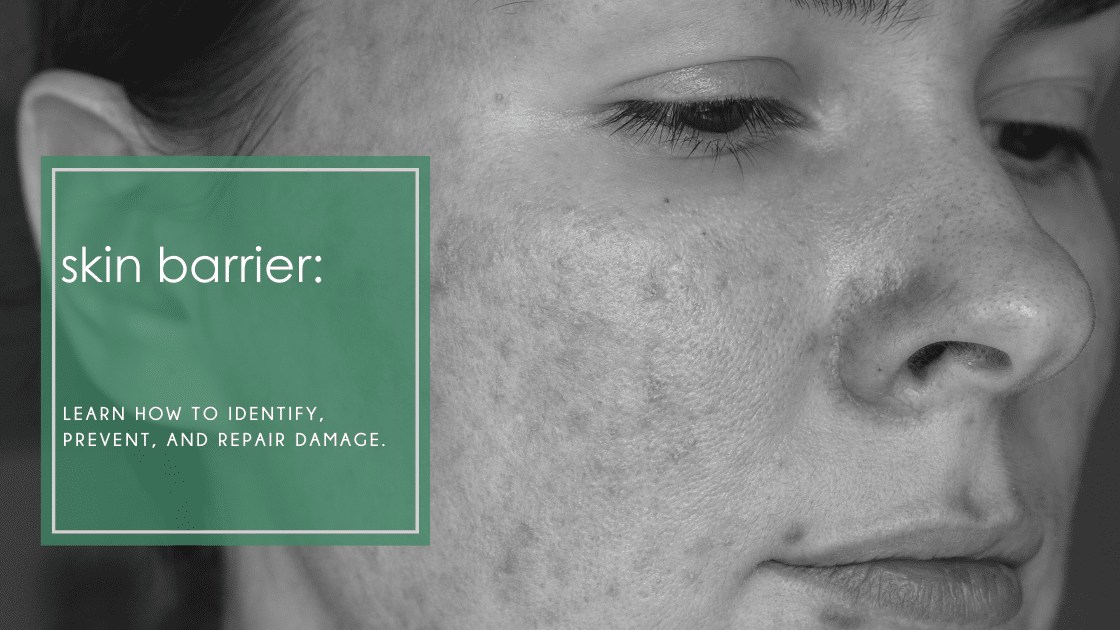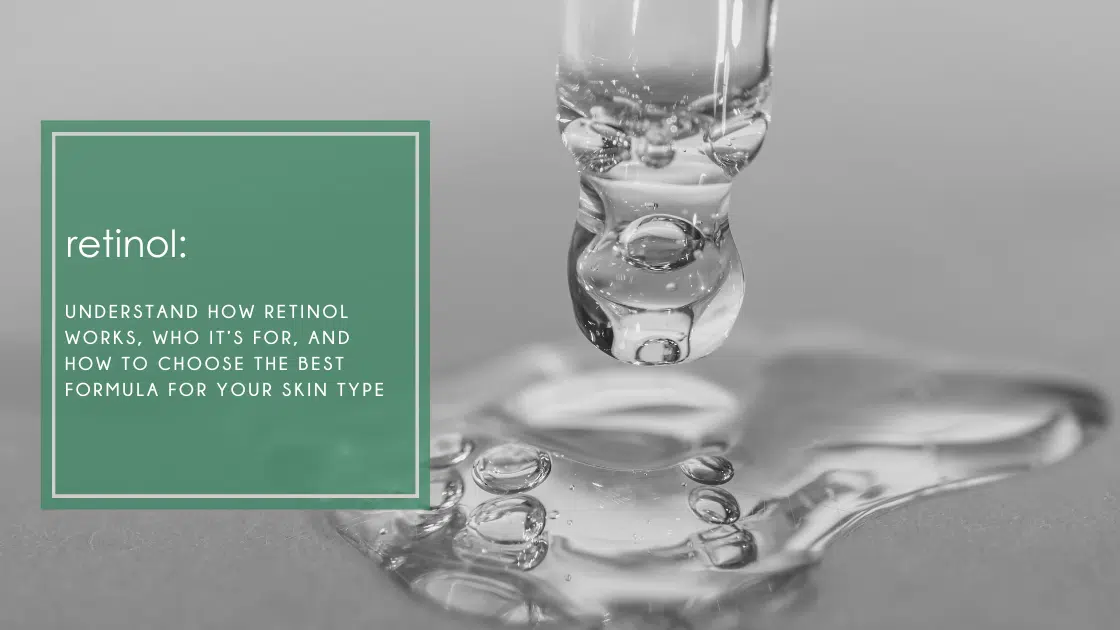Skin Barrier Damage: The Truth and How to Heal It
Why Skin Barrier Health Matters
Your skin, the largest organ of your body, and the first line of defense. Its main role? To protect your body from harmful substances and lock moisture in. Daily exposure to harsh skin treatments or exfoliants, environmental stressors, pollution, and even well-intentioned skincare products can break down our skin barrier. In this blog, we’ll cover what the skin barrier is, how it becomes damaged, what it looks like when compromised, and how to repair it. Let’s dig in!
What is The Role of our Skin?
Think of our skin as a protective shield that covers our entire body. It is a detox organ, which means it lets toxins from the body through our pores. It isn’t supposed to let anything in.
What Is The Skin Barrier?
Picture your skin like a brick wall. The skin cells are the bricks, and oil, ceramides, and cholesterol make up the mortar holding it all together. Healthy skin is like a brick wall on a brand-new house; the bricks are perfectly lined up. Now, picture an old building with a broken-down brick wall – there are cracks in the bricks, the mortar has broken off in some parts, and there are holes in some of the bricks. This is what a damaged skin barrier looks like. This outermost layer, called the Stratum corneum layer, is what makes up our skin barrier. Its job?
✔️Keep moisture in
✔️Keep toxins, bacteria, and irritants out
When your brick wall becomes cracked from over-exfoliation, pollutants, or harsh chemicals, this creates microscopic tears in the skin. Your skin becomes vulnerable, leading to breakouts, dryness, and inflammation.
Why Your Skin Barrier Becomes Damaged
Here are some common culprits:
Endocrine Disruptors
Found in many household cleaners, skincare products, and cosmetics. Endocrine disruptors weaken the skin barrier, making it more susceptible to water loss, microscopic tears, and increased skin sensitivity. MDPI states, “Endocrine disruptors (EDs) are molecules capable of mimicking the natural hormones of the body and interfering with the endocrine system in both humans and wildlife. Cosmetic products are one source of EDs; these include an extensive variety of personal care and beauty products designed for the skin and hair, as well as makeup. The widespread use of such products has raised concerns about the presence of EDs within them.”
Harsh Facial Cleansers
Many consumers select gel-based facial cleansers because they believe that a “squeaky-clean” feeling means their skin is clean. This is not true and a sign that your cleanser has stripped your skin – it removes both oil and water, causing your skin barrier to break down! Skin should feel soft and clean, not tight!
Over-Exfoliating
Mechanical exfoliating devices, scrubs, acids, and at-home microneedling devices – too aggressive on the skin. While exfoliation is important, it should never leave your skin feeling raw, red, or irritated. In our previous blog about exfoliation, we covered exfoliants. Click here to learn more.
What Happens When The Skin Barrier is Damaged?
Two key things happen:
1️⃣ Water loss: Also known as Transepidermal Water Loss (TEWL), is when moisture escapes from the skin in the form of evaporation. When moisture escapes from the skin, this creates a compromised skin barrier. It leads to dry, tight, or flaky skin and can be worse in dry climates or winter months. However, pollution can increase TEWL. According to a study published in PubMed, “The four studies studying the effect of pollution on TEWL all concluded that people residing in urban areas show higher TEWL values compared to those residing in rural areas and increasing TEWL values with increasing exposure to NO and PM. Exposure to PM in particular has been linked to skin diseases such as atopic dermatitis, potentially due to transient increases in TEWL. Nitrogen dioxide may cause disruption to skin by similar mechanisms, but additional research on NO and other pollutants and how they affect barrier function is needed.”
2️⃣ Fight or flight: Your skin sees damage as a threat. Our skin has its own immune system to fight off bacteria, chemicals, pollution, UV rays, and other harmful substances from entering the body. It launches an immune response, releasing inflammatory signals, called cytokines, that can cause redness, sensitivity, or breakouts, throwing your skin into fight or flight mode. PubMed explains it: “Primary cytokines are poised for release in response to minimal external perturbations, and following their release, they signal divergent, downstream pathways that initiate both homeostatic (repair-related) and pro-inflammatory processes. This often-pathogenic sequence is based upon the cutaneous defensive function of greatest importance; i.e. the requirement to maintain a competent permeability barrier in a hostile terrestrial environment. These cytokines, along with other signaling molecules, stimulate a variety of metabolic responses aimed at a rapid restoration of normal barrier function by downstream recruitment/entrapment of inflammatory cells. Yet, they often simultaneously initiate a cytokine cascade that stimulates epidermal hyperplasia, inflammation, and perhaps a further barrier abnormality”
How Do You Know if Your Skin Barrier is Damaged?
Our skin is a smart organ, and if we are paying attention, it will communicate with us by not responding the way we want. Here are some signs to look for:
🔹Dry, flaky skin or dry patches
🔹Redness or Sensitivity
🔹Stinging when applying products
🔹Acne or breakouts
🔹Pre-mature fine lines and wrinkles
Ever wonder why your skincare products aren’t working? Your compromised barrier could be the reason why!
Healthy Skin Barrier vs. Damaged Skin
We talked about our brick wall earlier – so let’s picture a brand new brick wall – smooth, solid, and secure. That’s what healthy skin should look like. Now, picture an old brick wall with cracks in the mortar and holes in the bricks – that’s a damaged barrier, allowing irritants to sneak in and water to evaporate.
Skin Barrier vs. Acid Mantle: What’s the Difference?
Many confuse our acid mantle with our skin barrier. Both work in similar ways, but have completely different functions.
Skin Barrier: a structural defense that prevents harmful substances from entering.
Acid Mantle: pH-balancing film that acts like a protective seal
The Acid Mantle is slightly acidic, between pH 4.5-5.5. Maintaining this pH is crucial for our skin’s defense mechanisms to be active. If we destroy the acid mantle, our skin loses it’s ability to protect against harmful microbes. When the pH of our skin is thrown off from harsh cleansers or over-exfoliating, the skin becomes prone to breakouts, inflammation, and infection. The Journal of Integrative Dermatology talks about our acid mantle as, “Lifestyle modifications can also impact the pH of the acid mantle. Factors such as diet, stress levels, and environmental exposures can influence the skin’s acidity. Adopting habits that promote skin health, such as reducing exposure to harsh chemicals, maintaining a balanced diet rich in antioxidants and essential nutrients, and managing stress effectively, can contribute to maintaining an optimal acid mantle pH. These lifestyle adjustments complement topical treatments, providing a holistic approach to supporting skin barrier function.”
Damaged Skin Barrier and Skin Conditions
If you have acne, rosacea, or sensitive skin, a compromised barrier will worsen skin symptoms. Ironically, many products designed to “clear acne” are the very products destroying our skin barrier. Restoring your skin barrier is key to calming inflammation and minimizing breakouts. If we let our skin do its job, it will naturally heal itself!
When your skin is healthy, here’s what you’ll notice:
🔹Regular cell turnover
🔹Produces ceramides that reduce water loss
🔹Increases moisture levels in the skin to aid in barrier repair
🔹Normalizes oil production
🔹Skin looks healthy, brighter, and younger
Will My Skin Repair Itself?
Yes, but it takes time. The skin renews itself every 28-40 days, depending on your age and damage levels. Healing your barrier is not an overnight fix, but with the right products and support, you’ll begin to see real changes in 4-6 weeks. This is why we recommend monthly facials – to support your skin through each cell cycle and adjust treatments based on skin response, season of the year, and season of life.
How To Repair Your Skin Barrier (The Right Way)
At Skin Deep Esthetics, this is our specialty! Here are a few ways to heal your skin barrier:
🔹Gentle Cleansers: Cream-based or Oil-based cleansers
🔹Non-Abrasive Exfoliants: Gommage or Enzyme only 1x per week
🔹Barrier-Boosting Serums: Hyaluronic acid, Salmon DNA, Peptides, and Bakuchiol
🔹Hydrating Moisturizers: Lightweight for oily or acne-prone skin and richer formulas for dry and/or aging skins
🔹Protect: Sunscreen is a MUST! Moisturizing sunscreen or apply over your moisturizer.
Discover gentle, effective skincare, handpicked to protect and rebuild your skin’s natural defenses. Click here to shop for skincare.
How to Heal Without Clogging Pores
You don’t need thick, heavy skincare products to heal. In fact, when your barrier is strong and healthy, you don’t need heavy products. Your oil production naturally balances out, reducing clogged pores and breakouts. You’ll find that less is more when it comes to your skincare.
How to Heal From the Inside Out?
Healing your skin barrier isn’t just topical – it starts inside the body. We don’t associate skin problems with an unhealthy body. Lifestyle changes play a huge part in our health. The good news is, your skin will respond and thank you.
Hydrate: Start by increasing water intake. Set timers, carry a water bottle with you everywhere, and create small, simple habits to sip often.
Protein: Eat more protein. More studies are being done on the positive impact of eating fatty red meat. High protein diets increase amino acids, the building blocks for our cells, and slow down the aging process by reducing inflammation in the body. What if plants AREN’T good for you? Check out this blog by Dr. Paul Saladino, start to wrap your head around this concept, and begin to introduce fatty red meat back into your diet.
Eliminate Sugar: Sugar IS highly addictive and causes inflammation and glycation, which breaks down proteins, speeding up aging. We talked about the damage from Glycation in our previous blog. Reducing sugar intake helps improve your skin, and your body heals.
We work with you to shift your skincare products and offer diet and lifestyle changes so you can heal from the inside out.
Ready to Heal Your Skin? We Can Help.
Your skin wants to heal itself. It’s trying to – it just needs the right support. At Skin Deep Esthetics, we create customized skincare plans, barrier-repair facials, and guide you with lifestyle changes that promote healthy skin. Give your skin the healing support it deserves – schedule a customized facial treatment today with our expert estheticians.
If you have questions or comments, drop them below




